#bad gonzo is worse than no gonzo
Explore tagged Tumblr posts
Note
🔥Punisher: Last Gun on Earth?
This ask is referring to the fairly-obscure 2010 zombie apocalypse Elseworld Marvel Universe Vs The Punisher by Jonathan Maberry, as well as the two prequels following Wolverine and Hawkeye at different points in the same timeline. I've been meaning to do a more comprehensive write-up on this for quite some time, as it was a series distinct from but very visibly in conversation with Marvel Zombies, which Maberry was also peripherally involved with. The elevator pitch is that a fuckup by the Punisher during a hit on the Russian Mob results in a cold war bioweapon getting into the biosphere, eventually turning almost the entire human population, and most of the superheroes, into adrenaline-fueled 28-days-later style rage zombies. Content Warning under the cut for discussions of racism


Despite its many, many flaws, there was a lot I enjoyed about this series, and alongside Marvel Zombies it had a not-insubstantial impact on my own aesthetic sensibilities, which I think probably comes through in a lot of my zombie artwork. The first mini, Marvel Universe Vs The Punisher, is a pastiche of I am Legend, with Frank Castle in the role of Robert Neville, an infected Deadpool in the role of Neville's abnormally sentient neighbor Ben Cortman, and with a zombified Spider-Man the white whale that he's spent five years hunting through the remains of Manhattan. Before I get into the rancid shit, I'm going to talk about what I enjoyed:
While the series succumbs to all-too-common Punisher Wank in terms of his efficacy in taking down a number of the A-list infected heroes, it ultimately comes out the other side as a pretty competent piece of character work for Frank; the series is grimly aware that a virus turning most of the human population into a shooting gallery of sadistic cannibal maniacs would be something like Valhalla for Frank, regardless of his pretensions to the contrary. Moreover, it's subtly implied that Frank's belief that he's immune is incorrect, and what's actually happening is that a virus that turns you into a vindictive, dogmatic maniac with a hardwired us-or-them mindset had no effect on him because he was already like that. There are ultimately revealed to be thousands of other survivors in New York, all of whom have spent five years studiously avoiding him because they think he's batshit insane. Even zombie Spider-Man, played up as the Biggest Bad, is ultimately revealed to have retained enough humanity to protect his uninfected family the entire time, whereas Frank is ultimately painted as unrelenting genocide machine whose psychological inability to give quarter ultimately makes him worse than the infected.
From there the series extrapolated some hilarious commentary on the genre as a whole; the zombie outbreak was going on for months before reaching critical mass, and nobody noticed because the baseline levels of random street violence and superpowered brawls are already so high in these settings that nobody realized a lot of the fights were occurring for rage-virus reasons until Spider-Man killed and ate a supervillain on live television. The whole series can be viewed through the lens of the usual spectacle-bait crisis-crossover contrived-battle-between-heroes routine, distilled to its purest form and escalated to the point of Ragnarök; the art frequently deliberately obfuscates which combatants are infected and which are uninfected people fighting for their lives. In this way it's playing with the pre-existing logic of the superhero genre in a way that Marvel Zombies didn't.
Maberry knows how to use Deadpool in a supporting character role without having him eat the entire goddamn thing. It's a fun dynamic!

Unlike Marvel Zombies, which was deliberately unconcerned with logistics as part of the gonzo fever-dream aesthetic, Maberry put some actual thought into a semi-plausible model by which a zombie virus could overrun a superhero setting. The responsible mutagen is air-and-waterborne, causing people to start turning at random months after being infected rather than through bites or fluid contact, and sneaks around healing factors because the mutations it causes are parsed as improvements rather than disease symptoms. Mass swarms of infected, unpowered civilians are as relevant, if not more relevant, than the superhumans are in spreading the infection, leading in turn to a lot of Left 4 dead styled set piece co-op fights like the one depicted above, and leading to the failure state that a superhero might be able to mince human wave attacks all day but at a certain point they'll have chewed through everyone they were ostensibly protecting by doing so, even if they themselves survive. This is a dynamic that, ultimately, only Frank Castle is really capable of thriving within, because with him it was never about protecting people, just hurting "bad" ones.
Which leads to another major positive points- the series is also a lot more concerned with rendering the setting's downward spiral. Eight prequel issues depicting the superhero community going down fighting over the course of months, rather than folding like a dixie cup in a trash compactor for horror value. Dead Days is the closest that Marvel Zombies ever got to rendering that same process, and while that was a very good oneshot it was still a deliberately compact one-shot. Here you get tableau after tableau of survivors throwing down with zombies. Unlikely alliances, second-string deep-cut z-listers crawling out of the woodwork- all interspersed with the growing realization among the protagonists that this is not business as usual, the status quo is not going to hold this time, it's just the actual apocalypse.

Here's Punisher, Hawkeye, Iron Fist and Black Cat trying to hold the Holland tunnel. Here's Dr. Bong, Howard the Duck Ruby Tuesday and Hit Monkey making a last stand in Central Park. This shit unironically kicks ass! This is what I think a lot of people are gesturing at when they say that they want to see a superheroes vs zombies story.

And, on that note, if you're going to tell this kind of story, Punisher, Wolverine and Hawkeye are objectively three of the best characters to have as the viewpoint characters- precisely the right level of competence and street-level scrappiness to survive without having a prayer of turning the tables outright. "Shit, Man, this superhero war is fucked-" the comic.

One additional minor thing I enjoyed about the series, aesthetically, is that while Marvel Zombies was a deliberately anachronistic mish-mash where every character was depicted in their most visually iconic outfits from across decades of publication, This series was very specifically working with the Marvel Universe status quo circa 2010 when it was published- The X-Men in San Francisco, Red Hulk on the Avengers, now-long-forgotten Avengers Academy kids in crowd shots. It grounds the narrative in a way Marvel Zombies was deliberately avoiding, acting as a snapshot and a time capsule in a neat way.
Now onto the two big things I didn't like about this series, the latter of which sinks it really really badly:
One: Caption Cancer. Maberry is one of those authors who I like on balance but who also often lapses into Talking Just To Talk. How many times does the navel-gazey running commentary in the above excerpts double back on itself, and how much is it actually saying- particularly when contrasted with the story told by the art and dialogue alone? Either he felt a need to fill the space (bad) or worse, he thought that these were some kind of deep and compelling rumination on the human condition. In general the balance of exposition to action in this thing were.... all over the place, not always integrated gracefully. The best sequences in the book are the ones where the captions just shut the fuck up so we can watch these people clobber each other. This is not a problem the original Marvel Zombies had- one thing I like about Kirkman is that he's usually a caption minimalist, letting the art and the dialogue do the heavy lifting. You don't get a page as quiet and decompressed as the following in the entire 12 issue run of Marvel Universe Vs.

Two: It's Racist. Like, really really racist. The comic continuously lapses into extremely racist imagery with the infected, using the visual language of "primitive savage tribes" with seemingly zero awareness of the real-life groups that those tropes were used to propagandize against and dehumanize. It's one thing to have zombies that take human body parts as trophies- that's kind of a cool motif- it's quite another to have a zombified Hulk who braids his hair in an obvious caricature of Native Americans, complete with feathers. What the fuck, Maberry!
Moreover it's a comically unforced error- everything compelling happens outside of that imagery, it's adding basically nothing but an attack surface to the premise. 28 days later did this basic premise without the racism, Left 4 Dead did this basic premise without the racism, The Crazies did this basic premise without the racism, Fucking Crossed did this basic premise without using the same racist visual language, at least until after Ennis left the book. Congratulations- you found a way to make the zombies more on-the-face racially insensitive than Garth Ennis. Round of Applause, everyone. This specific issue is why I don't think I've ever brought this book up in depth unprompted, it's genuinely really gross.
Anyway, those are my unified thoughts on the Marvel Universe Vs. trilogy, hope you enjoyed.
#marvel zombies#marvel universe vs the punisher#the punisher#frank castle#ask#asks#ask game#marvel universe vs hawkeye#marvel universe vs wolverine#marvel#marvel comics#comics review#analysis#superheroes#superhero comics#marvel universe vs the avengers#marvel universe vs#thoughts#meta#effortpost
57 notes
·
View notes
Text
I'm sure it's been written to death at some point in this fandom, but I'm new, so I'm thinking of all the ways Nacho Varga's ghost haunts Breaking Bad.
The most obvious one- Hector in the chair.
Tuco screaming: "You never, NEVER trust the ones you love!!!" When he thinks Gonzo has betrayed him. (Also, side note- We all know Tuco's aggression gets worse on drugs, but I bet Nacho's betrayal made him even more paranoid).
Fring's "I don't find fear to be a very effective motivator" said word for word to him by Mike when he's trying to argue Varga's corner.
Also the reason Fring takes Jesse in.
I think the main reason Gus killed Victor was he got himself seen at the crime scene in BB but I think BCS probably added an additional layer because Gus was probably pissed Victor shot a hole in Nacho's stomach. I know he ordered them to shoot him in the shoulder, but I find it difficult to believe someone as careful as Gus would order something as risky as a stomach wound which would kill his valuable mole. Victor getting caught at Gale's apartment was probably the Final Straw.
Jimmy yelling: "It wasn't me, it was Ignacio!" at Walt and Jesse when they kidnap him. (Yeah, I know this one is backwards because Nacho and Lalo's characters were born from this line, but I'm still including it).
Mike's reluctant attachment to Jesse, even though he initially tries to be aloof towards him. But then Jesse starts stomping around in his leather jacket with his shaved head and acting very bitchy and Mike is like 🙃 🥲
Mike getting shot in the side, in a car, just like Nacho was.
The one instance everyone quotes that I don't think is about Nacho, even retroactively: Mike's "I had a guy" line. I think Mike is just pissed because Victor was a more efficient/ patient coworker than Jesse.
On a lighter note, I find it funny that during the whole tragic Nacho arc, Walt was probably at home eating meatloaf.
#better call saul#breaking bad#breaking bad spoilers#(tag for my mutual who is watching it for the first time lol)#nacho varga#tuco salamanca#gustavo fring#jesse pinkman#hector salamanca#mike ehrmantraut#victor...he doesn't have a last name somehow
83 notes
·
View notes
Text
Robert Reich has excellent liberal credentials going back decades. He even worked for Sen. Robert F. Kennedy (b. 1925 - d. 1968) in the 1960s.
Dr. Reich urges us not to be misled by Robert F. Kennedy Jr. (b. 1954) who is using his family name to mislead voters. RFK Jr. is no chip off the old block.
Some people think that RFK Jr is like RFK Sr or like JFK. Apart from the DNA, RFK Jr is no more like his father or uncle than Donald Trump is like Abraham Lincoln.
Let me paraphrase Lloyd Bentsen’s remark to Dan Quayle during the vice-presidential debate in 1988: I knew Robert F. Kennedy, and Robert F. Kennedy Jr. is no Robert F. Kennedy. I worked in Robert F. Kennedy’s Senate office in 1967. It was not a glamorous job. I ran the signature machine, making sure that letters to constituents were lined up properly so that the pen at the end of a long automated arm would write out the senator’s name appropriately. But I did have a chance to get to see Bobby Kennedy close up. I watched him stand up for economic and social justice. I witnessed him bringing together people of every race and ethnicity — to demand equal rights and an end to the Vietnam War.
Robert Kennedy was a noble and courageous individual. On the evening that Dr. Martin Luther King was assassinated he spoke extemporaneously to a crowd of black supporters in Indiana.
youtube
His son Robert Kennedy Jr has become an anti-vaxxing conspiracy nut and a bigot.
As someone on the autism spectrum I have long been familiar with his totally unsupported contention about vaccines causing autism. But in recent years he has expanded his conspiracy theories into MAGA territory.
Robert F. Kennedy would never have suggested or even thought that a deadly virus was targeted at certain races. He wouldn’t have repeated the trope, dating at least to the Middle Ages, that Jews unleashed a plague on non-Jews. Robert F. Kennedy Jr. stands for the opposite of what his father did. In addition to his gonzo bioweapons ethnic conspiracy theory, RFK Jr. has promoted the baseless claim linking vaccines to autism. He’s been a leading proponent of COVID-19 vaccine misinformation, suggesting the vaccine has killed more people than it has saved. He doesn’t support a ban on assault weapons and blames the rise of mass shootings in America on pharmaceutical drugs. [ ... ] Were it not for his illustrious name, Robert F. Kennedy Jr. would be just another crackpot in the growing number of bottom-feeding right-wing fringe politicians seeking high office. But the Robert F. Kennedy brand is political gold.
RFK Jr's relatives have condemned his recent foray into anti-Semitism.
Kennedy family joins White House in condemning RFK Jr’s ‘antisemitic’ Covid conspiracy claim
RFK Jr's vanity presidential campaign, such as it is, has been rather bizarre.
Robert F. Kennedy Jr. press dinner explodes in war of words and farting
Nobody should think that RFK Jr signals some sort of return to Camelot. Nostalgia as politics is a bad idea. It's even worse when a bad actor is exploiting that nostalgia for personal gain.
#the kennedy family#robert f. kennedy jr.#rfk jr#conspiracy theories#anti vaxxers#covid-19#anti-semitism#vaccinations#autism#robert reich
4 notes
·
View notes
Text
Yeah, the Get Along Gang aren't fascists. They're narcs.
Was the TLDR not an indication that I was joking? That I was mocking the pearl-clutching Helen Lovejoys who are taking this seriously, because here's some other bangers from the article:
We go to one of those scary parishes where the old Latin Mass is said twice on Sundays, and I must say the sexual proclivities of Dora the Explorer are a major topic of concern.
Our friends have a point. There is a lot of this stuff going around, and you have to wonder whether even the most progressive parents really believe their kids need to learn whether in addition to being blue and wearing a diaper, Gonzo in Muppet Babies is gender-queer. (Do Muppets in fact have sex? Inquiring minds don’t in fact want to know.)
Despite my best efforts, the kids have managed to see a lot of these shows, mostly at grandparents’ houses. The worst one, worse than Daniel Tiger or PJ Masks or even My Little Pony (which is the subject of a pedophile cult in these United States) is Paw Patrol
They also go on to mock the very concept of CGI animation because it's "ugly" and go on to praise Doug, but that's just bad taste, not a signs of a deeply reactionary mindset.
Dude goes to a church that thinks Dora the Explorer's sex life is worth sermon time. He's not on your side.
But through the (now seemingly deleted I wonder why that is) replies to this post, and through some of the notes, people point out that these are nutty takes, but on Paw Patrol. they're "cooking."
Ya'll vampires?
Because I don't see any reflecting going on.

19K notes
·
View notes
Note
I have an idea for you (this is andrews-jorts-loving-pipe-dream btw). So, hear me out, Neil (or Andrew it doesn't matter) gets appendicitis (but he won't admit it) and during his fevered dreams before Andrew (or Neil gets worried enough and feels bad that he's going against Andrew's aversion to doctors) finally gets frustrated enough with his "I'm fine" mantra and drags him to the hospital, he starts imaging all of the foxes as Muppets.
Just an idea 😁😁😁
OMFG so here's a tiny bit that I thought of, I gotta expand this at some point (this ended up being longer than I meant it to be):
Neil was getting worried. The fever was definitely getting worse and Andrew hadn't stopped complaining about the stomach cramps. He hadn't eaten all day - hadn't had anything but water since he'd thrown up that morning - but he'd refused a trip to the hospital. And Neil understood why, but he was starting to think that he'd have to drag Andrew there even if he protested. That was the last thing he wanted to do.
Well, maybe eating would help. Neil had warmed up some canned tomato soup that would hopefully be easy enough on Andrew's stomach. He brought it into the bedroom, where Andrew had curled up under the covers, wearing the big black hoodie they reserved for bad days. The cats were curled up on the bed as well, seeming just as worried as Neil was.
"Andrew?" he called. All he got was a grunt in response, but that meant he was still coherent enough to listen. "You need to eat. I brought you some soup."
He sat down on the edge of the bed and watched Andrew slowly blink at him. "I don't need soup, 'm not hungry," Andrew slurred.
"You haven't eaten anything today," Neil told him, trying to be as patient as possible.
"Hurts," Andrew huffed. "Fine, I'm fine. I'll eat it."
"Thank you," Neil said. "Here, let me take your temperature, first."
All Andrew did was blink slowly again as Neil put the bowl of soup on one nightstand and grabbed the thermometer. He'd never been this out of it before, not with a fever, and Neil was pretty sure Andrew had warmed up again after huddling under the covers. He'd been pulling them away all day.
"Can I take your temperature?" Neil asked.
"'ssss..." Andrew hissed.
Bad. Not good. The opposite of fine. Neil reached out anyway, gently tilting Andrew's head to get the thermometer at the right angle at his forehead. It wasn't until after he saw the number 103°F that he noticed Andrew's stare through his climbing worry. "What?" Neil dared to ask.
"Your..." Andrew trailed off. "Hair's like Beaker."
Huh? "Who the hell is Beaker?"
"From the Muppets?" Andrew slurred. "Yeah. 's all red and crazy."
It wasn't a laughing matter. Andrew comparing him to a Muppet of all things should not be funny, especially given the circumstances. But Neil still snorted. "Thanks, Andrew."
"You know Matt's kinda like Fozzie?" Andrew continued. "Aaron's face does the - does the - " He paused, frowning. "Kermit scrunch. Yeah, that's it."
"So, Katelyn is Miss Piggy?" Neil asked, looking for his phone.
"Yeah. Kevin's Animal. Nicky's a chicken."
"So, who're you?" Neil asked. He found his phone under some of the blankets, using that as an excuse to rip them off of Andrew's overheated body.
"We," he said, motioning for Neil to lean in. "We are the guys that judge everything."
He must've forgotten that he'd already labeled Neil as Beaker. Neil nodded along while Andrew started mumbling that he actually wanted Renee to be the old guy with him and started calling Aaron. "I wish I could record this," he grumbled. "You'll deny this until you die."
"Nobody we know is cool enough to be Gonzo," Andrew added.
"What the hell do you want, Neil?" Aaron asked when he answered the call.
"Your brother has a high fever and just called me a Muppet," Neil said, barely able to keep the smirk off his face as Andrew continued rambling. "I'd appreciate if you'd help convince him he needs to go to the hospital."
#aftg#aftg wip#aftg fanfic#andreil#andreil wip#andreil fanfic#andriel#tfc#tfc fanfic#all for the game#all for the game fanfic#the foxhole court#this was so much fun to make#honestly its been a long time since ive watched the muppets so i wasn't 100% on who to make who#but then i thought andrew has a high fever whatever he aint thinking either#jinger's works
188 notes
·
View notes
Text
I’d usually keep this on my Muppets side blog but let’s talk about Muppet theory!
There are two basic categories of Muppets. The first is order Muppets. Some examples of OM’s are Kermit the Frog, Scooter, Beaker, Walter, Bert, and Sam the Eagle. These Muppets keep the show running and look to solve problems. They tend to be neurotic and like to keep to a schedule.
The other type of Muppet are chaos Muppets. CM’s include Gonzo the Great, Fozzie, Ms. Piggy, Animal, Cookie Monster, Ernie, and Constantine. While not inherently bad, CM’s are more wild and emotional (they usually cause conflict). These Muppets aren’t necessarily worse (or better) than OM’s.
You may have noticed that, even though they are an iconic dynamic duo, Bert is an order Muppet and Ernie is a chaos Muppet. Order/chaos Muppet duos actually tend to do pretty well- it’s similar to opposites attract, but not exactly the same (a very positive person could be an order or chaos Muppet, same with pessimistic people or realists). Order will always want to fix chaos and chaos will always want to be fixed. Some famous non Muppet C-O duos include Katara and Sokka from A:TLA, Ben and Leslie from Parks and Rec, Joel and Clementine from Eternal Sunshine of the Spotless Mind (a case where the pairing didn’t work), Rory and Lorelai from Gilmore Girls, Leia and Han from Star Wars, and Chidi and Eleanore from The Good Place.
Muppet theory starts to get interesting when you apply it to non Muppets. Real life examples of OM’s are Taylor Swift and Tom Hanks. CM’s could be former Justice Breyers (</3) and Trisha Paytas. I could even apply it to my mutuals-
@neptuneonearth Unadulterated Chaos Muppet
@sagittariusbaefylover Chaos Muppet
@sagittariusbaefyhater Order Muppet
@poopsockcunt seems like a chaos Muppet but in reality is an order Muppet
@crazybusbooty chaos Muppet
@harleenquinzelsgf order Muppet
There are more specific Muppet sects, here are sources if interested:
33 notes
·
View notes
Text
Gonna be a dumbass and discourse on gender politics! So Apple recently hired Antonio Garcia Martinez onto their team, but that become a big blow-up as he has authored a quasi-biographical/quasi-fictional book Chaos Monkeys and he was fired. Its views are Sexist (now Apple™ certified!), and this is the money quote that circulated:

The Verge article, because of course there is a Verge article - praise the spirit of Friedan that there isn’t a Jezebel article - is here, with extremely useful information like the percent of tech workers who are white and Asian, gee thanks for the context.
Much more of his book of course is presented, and that is the real context you do need. Martinez describes the book as “total Hunter S. Thompson/Gonzo mode” and yeah, its a pretty passable attempt, kudos. Which means, of course, that we are going to be insulting fucking *everyone*. Everyone is a shitheel, a patsy, a fraud, or a victim (already or destined-to-be), this is How The World Works and the dear author is gonna expose The Truth. That’s the genre, so into the text we go:
The above passage is, of course, setting up a comparison to the woman the main character is dating:

Ah, not from money, lived in poverty, has done manual labor, tall, imposing. This is what we call contrast folks! Gonna set up a norm for what “regular” people are, and make a character who stands out interesting. Kindof a literary 101 here. And we are gonna throw every other woman under the bus to do it, right?
“Well that is what’s sexist, calling all woman that”. All women in the Bay Area, you mean. “Okay sure, but that is still sexism”. Pause for a second - what do you think his opinion of men in the Bay Area is? I won’t bore you, its that they are petulant louts whose arrogance and entitlement is eclipsed only by their ignorance. Because its Hunter S Thompson! Everyone sucks.
Look me in the eyes and tell me you think the median mid-level product manager at a Bay Area tech firm would be worth a pinch of salt in a gunfight - you know they wouldn’t! Well that is the claim in question, what's the objection?! ‘Why care about that metric?’ No clue, seems crazy to me, I guess machismo is one hell of a drug and Martinez is riding it into the sunset but I can’t claim its any worse than making hitting Diversity/Inclusion metrics for your company’s Board of Advisors your high of choice.
My high of choice is this fucking needle injection of a quote from the leader of the protest:

I am sure you did “work relentlessly”. A decision that was, in all likelihood, made easier by having no college debt and attending a private highschool and having infinite access to tutors and whatever resources you needed to succeed, the typical experience of the large majority of the people who work in finance in the Bay Area! ‘Earning’ your income but also benefitting from deep structural advantages that put you there? If only there was a word for that. Would be neat if there was anyone identifying as a leftist at Verge who could comment! Maybe you could ask Martinez for help - since that was literally the point of the passage in question.
(Though seriously Martinez, I know your girl had a rough facade but her first job was an internship at Citibank. Comparing her to the Afghan Eyes girl is, to speak your lingo, overpricing your asset’s fundamental value)
The rest of the complaints are like this, with a healthy dose of “man describes how he is sexually attracted to someone, and That’s Bad”, and its all so vapid. Fundamentally, this episode, while of course tiny and Not Important, is just another part of the creeping ‘professionalization’ of every aspect of life that so many people demand. Not only is the content proscribed, but the manner of expression is equally placed on guardrails. I value too much diverse art to not be pissed off at the increasingly-obvious attempts to censure swaths of it away, even if it is very much doomed to fail.
9 notes
·
View notes
Video
youtube
Are you tired of Great Albums being about music people have actually heard of? Do you want me to just go ape shit, and review obscure minimal wave cassettes from the 80s? Admittedly, Oppenheimer Analysis’s New Mexico is one of the most famous weird minimal wave cassettes, and for good reason: it actually holds up quite well as an album! Come check out what all the fuss is about. Transcript below the break.
Welcome to Passionate Reply, and welcome to Great Albums! Today, I’ll be talking about a very cultish cult classic, and an album that’s one of the definitive works in the very underground scene of so-called “minimal wave”: New Mexico, the only full album released by the duo “Oppenheimer Analysis.” The band’s namesake was actually lead vocalist Andy Oppenheimer, who became acquainted with instrumentalist Martin Lloyd at the 1979 World Science Fiction Convention, where the pair bonded over speculative fiction, Midcentury graphic design and propaganda, and the work of early British electronic pioneers like the Human League. 1982’s New Mexico was these two’s first recording as a group, but Lloyd did go into it with one credit--the year prior, he and David Rome of Drinking Electricity released a double A-side, featuring the jumpy, playful instrumentals “Surface Tension'' and “Connections.” They referred to their act as “Analysis,” making it feel very much a part of the Oppenheimer Analysis story.
Music: “Surface Tension”
Oppenheimer, meanwhile, was a true outsider artist, making a living as a nuclear science writer without any substantive musical background. While not all minimal wave is “outsider music,” and not all electronic outsider music is minimal wave, there’s certainly a correlation there. Oppenheimer’s reedy, somewhat strained voice lends New Mexico the punkish charm that only utterly untrained vocalists can offer: a vessel that cracks and buckles as it fails to contain the raw emotion within.
Music: “Martyr”
The addition of a singer is one major distinction between New Mexico and Lloyd’s earlier compositions, but they’re also very different in tone. As I said earlier, the “Analysis” instrumentals are sort of light-hearted and sprightly, a bit reminiscent of the jazzy synth experiments of artists like Jean-Jacques Perrey and Gershon Kingsley. New Mexico is substantially darker and more gothic, as befitting an LP that’s at least partially a concept album about the nuclear age.
Music: “The Devil’s Dancers”
While nuclear anxiety is an indispensable theme of the album, it’s never a suffocating one that makes it feel horribly antiquated to modern ears. It’s a very aestheticized rumination on nuclear themes, that never jumps up and hollers, “bombs are bad!” Take, for example, the track “Radiance,” probably the best-known track on New Mexico...to the extent that any of them are that well-known. It’s one of the album’s most languorous, atmospheric moments, and paints a vividly desolate picture of ground zero after a detonation, with its fluttering, delicate, but ultimately frigid synth flourishes.
Music: “Radiance”
I think my favourite part of “Radiance” is actually its lyrical turn: an atomic blast isn’t like the radiance of a thousand suns, but rather, vice versa. The latter is the one that’s merely theoretical and dwells in the realm of poetic license, whereas the former is a historical fact that we all have to contend with. “Radiance” is quite solid, but in many ways it’s a pale imitation of the title track, a seven-minute sprawl that works exquisitely as a kind of musical landscape painting:
Music: “New Mexico”
Painfully evocative, with an eerie, almost yearning undercurrent, “New Mexico” is easily the track that feels the most grand and epic. I would really have loved for it to be given more of a place of honour in the tracklisting, possibly as the closing track, but it’s wedged somewhat awkwardly in the middle of the second side. I suppose we can’t expect quite as much from a gonzo underground mail-order cassette release, though. At any rate, while “Radiance” and “New Mexico” are absolutely about atom bombs, they remain very emotionally intimate--almost torturously so. A lot of the other tracks are less about the bomb itself, and more about the rise of “Big Science” in the Midcentury consciousness in the wake of the Second World War--chiefly, “Men In White Coats.”
Music: “Men In White Coats”
As in “The Devil’s Dancers,” Oppenheimer happily accepts the role of an evil or insidious narrator here, and sells us this megalomaniacal perspective with aplomb. A lot of early 80s synth, minimal wave and otherwise, is characterized by more deadpan vocalists, but I can’t stress enough how much Oppenheimer’s piercing lead vocals bring to this album. It’s perhaps the most critical on the tracks that delve into more traditionally emotional topics--chiefly, the standard romantic love numbers. Take, for instance, the harrowing, neurotic “Scorpions”:
Music: “Scorpions”
I’m certainly a fan of the title “New Mexico,” which just ties together all the right connotations. First and foremost, New Mexico is a place--a place you can visit. And this is one of those albums that really wants to ground you in a narrow and specific sense of place, a sonic landscape. New Mexico is mostly empty desert, large tracts of which have been government land even before it started being used more intensively for military research in the 20th Century...most famously, of course, on nuclear weapons. I like to think that the name also suggests novelty and recency of place. We are, after all, entering a “new” world, defined by the advances of science, and the upending of earlier ideas about the world.
The representation of the album art for New Mexico that I’ve been showing you is actually the imagery of the 2010 reissue of the album, which I’ve chosen because I think it’s a bit better known, and I simply prefer it, personally. The most striking thing about it is this colour--a ghostly green, that instantly evokes the common imagery of atomic phenomena. Radiation doesn’t really glow green, of course, but, like everything else about the album, it’s clear that this choice is meant to be a reflection upon the greater cultural imaginings and social impact of the Atomic Age, so I think it’s a perfect fit. At the center of the composition, we see a figure, head bowed and face shaded to provide some sense of anonymity, reaching a hand towards the side of his face in a gesture that’s almost reminiscent of using a cell phone at first glance. What exactly he’s up to is as unclear as his identity. Between the modernist styling of the architecture to his left, and his antiquated attire, the image is quite suggestive of a Midcentury setting. But the real narrative angle here comes from the right side--several figures are approaching that central character, possibly in hostile pursuit. Espionage gone wrong? A desperate attempt to silence a whistle-blower? Much like the music, there’s an ambiguous, mysterious, but also menacing ambiance to this cover.
For historicity’s sake, I’ll also discuss the original cover of the homemade cassettes of New Mexico. As we might expect from the nature of this release, it’s a fairly simple graphic, featuring a nude woman whose full-figured body type, popular on pin-up models, and short hairstyle convey that Midcentury aesthetic almost as well as her clothed counterpart on the reissue. Our eyes are naturally drawn to her exposed breasts, where they meet a pair of radiation warning signs censoring her nipples. A simple image, but a deeply perverse or twisted one. Is it a kind of union between the vulgar, crass profanity of pornography, and the depravity of atomic weapons? Is it a visual representation of the way Oppenheimer Analysis have beautified the nuclear landscape, conflating man’s inhumanity to man with something voluptuous or pleasurable? This cover is at least as complex a symbol for the album as the reissue one is. And while it’s easy to dismiss it as lowbrow, I think it’s worth noting how the salacious or saucy aspect of it would have helped it fit in with other underground cassettes of its era, many of which had lurid or provocative imagery.
Of course, this discussion of the differing incarnations of the album is a natural segue to addressing the release history of New Mexico. The story of Oppenheimer Analysis is deeply entwined with that of New York-based Minimal Wave Records, founded in 2005 by Veronica Vasicka, a radio DJ fascinated by underground electronic music. The label specializes in making obscure, self-published works like New Mexico widely available in digital form, so that more music enthusiasts can get a chance to hear them. Without her, I myself might never have heard this album, and certainly wouldn’t be in a position to make a review like this! Vasicka felt strongly about the artistry of Oppenheimer Analysis, and gave the honour of her label’s first-ever release, “MW001,” to a self-titled EP compiling several of the tracks from New Mexico. Later, in 2010, when she was able to rerelease New Mexico in its entirety, she gave it the honourary designation of “MW001D.”
Vasicka is the one responsible for coining the term “minimal wave” to describe the subgenre she was interested in, and, fifteen years later, I think it’s safe to say it’s had some staying power. While it may be a bit vague and subject to individual interpretation, that’s a problem all genre labels contend with, and I think fans of minimal wave ought to be proud that this term was at least coined by a passionate and dedicated fan, who made her favourite music more accessible to everyone, as a labour of love. It’s also not the only genre term to come about much, much later than the music it seeks to describe. At any rate, New Mexico will always have a place in the minimal wave hall of fame, and it’s a genre-defining work, if in hindsight. The stylistic hallmarks of New Mexico are, for better or for worse, now also those of a whole movement: harsh, tinny rhythm machines, strident synth lines, anxious, unmannered vocals, and technological themes.
But what actually happened to Andy Oppenheimer and Martin Lloyd? In light of the renewed interest in their work in the 00s, they actually got back together for a bit, releasing some archival material from the 1980s and laying down a handful of new tracks, very similar in style to those on New Mexico. Lloyd passed away suddenly in 2013, but Oppenheimer has remained interested in keeping their ideas alive. He’s been performing live as well as putting out new music, first as “Touching the Void,” alongside Mark Warner of Sudeten Creche, and more recently as “Oppenheimer Mk II,” with Mahk Rumbae of Konstruktivists.
Music: “You Won’t Disarm Me”
Something that I think really stands out about New Mexico, especially when compared to a lot of other small-time minimal wave releases, is that it’s a very consistent quality throughout. As you might expect with an underground genre, a lot of the music to choose from is varying degrees of amateurish and clunky, and it’s arguably better to listen to Minimal Wave compilations than the LPs that exist. New Mexico is an exception, though, and doesn’t have any particularly weak tracks. The favourite tracks cited by fans of the album tend to vary pretty widely. My top pick, though, is the album’s opener, “Don’t Be Seen With Me.” It’s a perfect marriage of dizzying, spiraling synth runs, and one of Oppenheimer’s most frenetic vocal performances, that creates a masterful portrayal of being swept up in infatuation with somebody you really shouldn’t be fooling with. That’s all I’ve got--thanks for listening!
Music: “Don’t Be Seen With Me”
#music#great albums#album review#album reviews#minimal wave#minimalwave#coldwave#minimal synth#oppenheimer analysis
16 notes
·
View notes
Text
Hellsing Liveblog, Ch.11-13

This is the “Balance of Power” arc.

One of the things that frustrated me about the Hellsing TV anime (as opposed to the Hellsing Ultimate version) was that the TV series aired while the manga was still running, and it seemed to struggle between following the source material or just diverging into all new stories. I think if Gonzo had made up their minds one way or the other, it would have ended up a better show. Instead, there were all these filler scenes of Seras training with human soldiers, which seemed like an utter waste of the character’s time. Worse, this meant the human soldiers featured much more prominently than they ever did in the manga, where they all get killed off by Chapter 9 or something. And if you know that’s coming, like I did, it makes the human soldiers that much more insufferable, because you know dorks like Farguson aren’t going to matter, but they get tons of screen time anyway. Farguson is like every episode of Dragon Ball GT condensed into a single character.
Here, in the original manga, it’s pretty clear that the soldiers never mattered, because the only time you ever see them is when Jan Valentines’ ghoul army slaughters them all. They only existed so Integra would have something to be in charge of, but the only ones who actually matter here are herself, Alucard, Seras, and Walter. In this chapter, Walter practically admits as much, when he states that there were 96 staff members, and now we’re down to ten: Walter, Integra, and eight jabrones who weren’t at the base that day. Well, maybe those eight guys will show up later and do something important? Bullshit they will, they never get mentioned again. The Gonzoverse might have been able to break some new ground by focusing on those human characters more, but what they actually did was half-assed, and it looks all the more futile when you know how unimportant they are to the original work. Walter just hires a band of mercenaries to backfill all the vacant positions, and I’ll give you three guesses what happens to those guys.

Concerning “Millennium”, their mysterious new enemy, no one has any idea what they are. A bunch of people try to research it, because we didn’t have Google in 1999, or at least not Google as we now know it, so if you wanted to know something cryptic you just had to rummage through a card catalog in a library or whatever. But Integra just makes the logical leap that “Millennium” is a reference to the “Thousand Year Reich” dreamed of by Nazi Germany. This seems like a stretch, but I think Integra’s reasoning is that this is the only “Millennium” reference that could possibly be worth Hellsing’s attention.
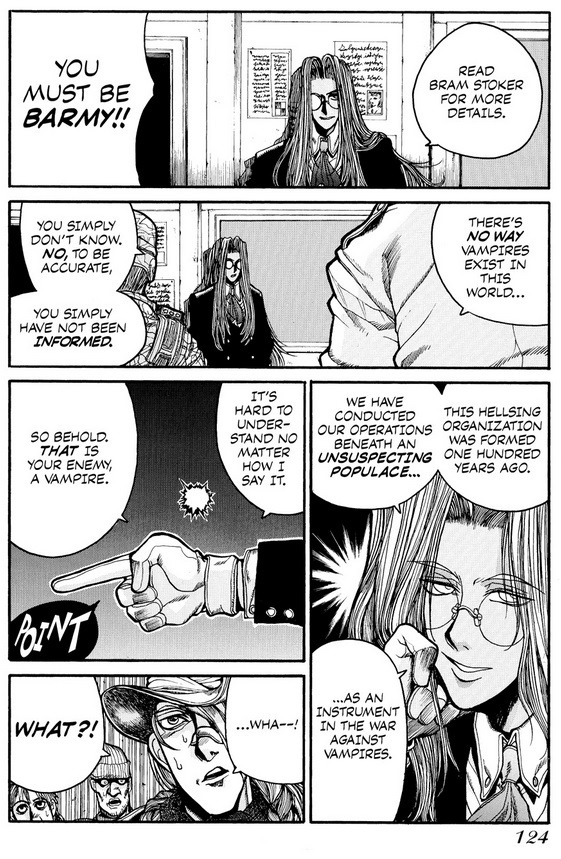
Later, Integra meets the Wild Geese, the merc group Walter hired, and explains their assignment even referencing the Bram Stoker novel. So I guess Dracula is a real book in the Hellsing world, but it must be at least partially based on a true story, right? The Geese don’t buy any of this, so Integra introduces them to Seras to prove that vampires are real.

They all laugh at Seras until she starts flicking their leader, Pip Bernadotte, with her fingers. Then Alucard shows up, and that seems to be enough to convince them.

After this, Integra gets a letter from the Iscariot Organization, inviting her to a meeting with Enrico Maxwell at the Imperial War Museum. The whole thing introduces Bishop Maxwell very effectively. He tries to play this off as a peaceful, diplomatic conference, but he makes Integra wait, and she’s still sore about Anderson’s violation of their treaty back in Chapter 5-6. Maxwell takes all this in stride, then replies that he could care less about the deaths of even two billion Protestants, so the two guys Anderson killed mean nothing to him. He’s only here because the Pope ordered him to do this, and he calls Integra a “Protestant sow” for good measure.
At this, Alucard comes out to stand up for Integra’s honor, and then Maxwell responds by bringing out Anderson, except Anderson has a berzerker rage thing going, so it kind of ruins Maxwell’s posturing. For all his contempt, he really was ordered to London to talk to Integra, so he’d probably get in trouble with the Pope if Anderson starts a big superhero battle in a museum.
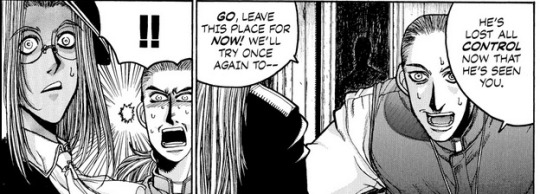
In Cross Fire, the unpublished manga that was sort of a precursor to Hellsing, Maxwell looked a lot like Sir Integra does now, so when Kouta Hirano brought him back for this arc, he slicked his hair back and removed his glasses. On the other hand, Integra doesn’t look much like the early Integra anymore either. By now, Hirano seems to have settled on her design, straightening her hair out and making her face longer and thinner. Anyway, Maxwell’s brinkmanship has backfired, and now even he can’t stop Anderson, so what can be done?

Luckily, Seras is here to provide a distraction, as she leads a tour group of elderly Japanese tourists through the gallery. For some reason this kills Anderson’s fighting mood completely, so he leaves. Alucard also leaves, because he hates being up during the day. Walter gives Seras a hearty thumbs up for defusing this tense situation. Good job, Seras. You’re doing amazing, sweetie.
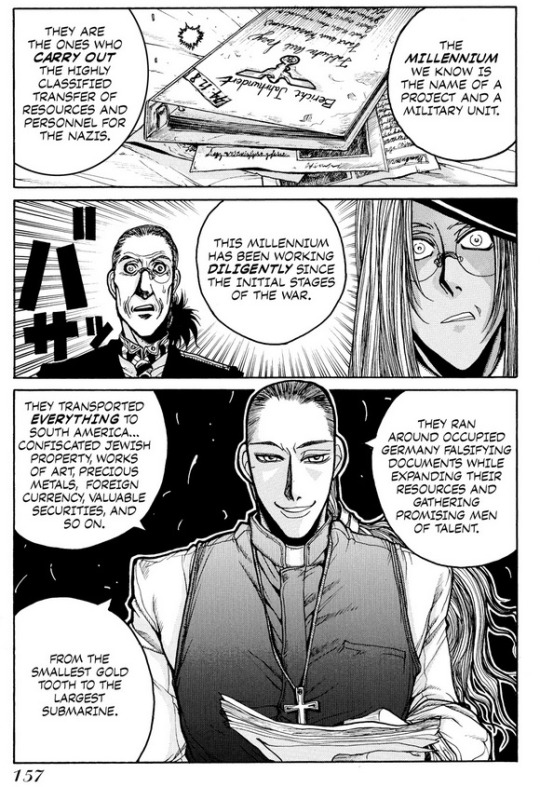
All right, so what’s so blamed important that the Pope would send Maxwell to London? Well, he knows about Millennium’s attack on Hellsing’s base, and he has some juicy deets on them. After making Integra say “please”, he explains that “Millennium” was a Nazi military unit responsible for transferring resources and personnel for Nazi Germany. They relocated a ton of these resources and personnel to South America for safe keeping. Integra’s not too impressed with that, since “Nazis fleeing to South America after the war” isn’t exactly a shocking revelation.
The twist here, though, is that Millennium was smuggling Nazi stuff to South America during World War II.
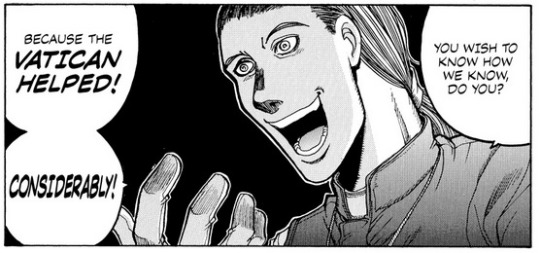
Also, the Vatican helped Millennium do this? I never understood this part of the story, but I think it gets explained later. I mean, it explains how Maxwell would have this lead to share with Hellsing, but it raises more questions than answers.
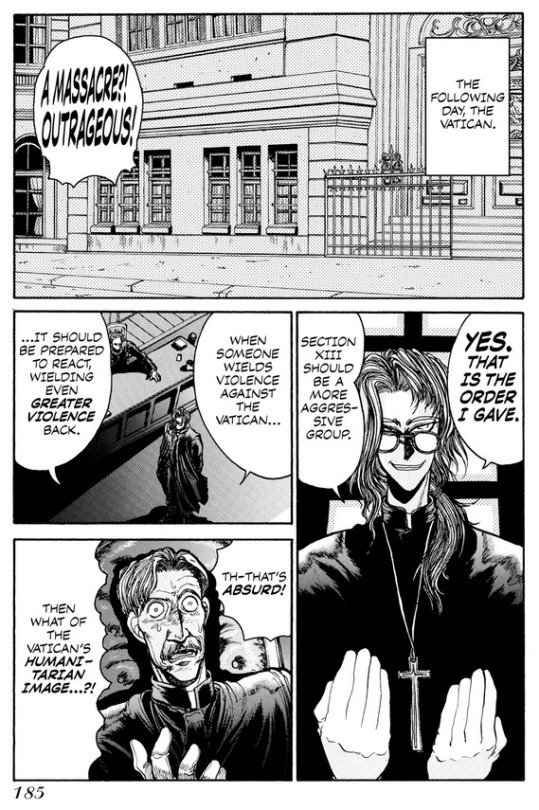

Volume 2 ends with another chapter of Cross Fire, starring Heinkel Wolfe and Yumiko Takagi. In the first story, they saved hostages from Islamic terrorists. This one is them recovering stolen church money from radical communists, which I guess could have been a thing in 1998? It’s basically the same story, though, as they send Yumiko to infiltrate the bad guys, then they slaughter everyone in sight. Mostly, I want to focus on the part at the end, where Maxwell, the leader of Iscariot, justifies the use of extreme hyper-violence in the name of the Catholic Church. You sort of get the sense that the Iscariot Organization in Cross Fire was a concept in search of a villain. the idea of two girl-assassins dressed as a nun and a priest might have had some traction, but Hirano really seems to have had trouble coming up with worthy enemies for them to fight. But Hellsing brings vampires into the mix, which suits the Iscariots quite nicely.
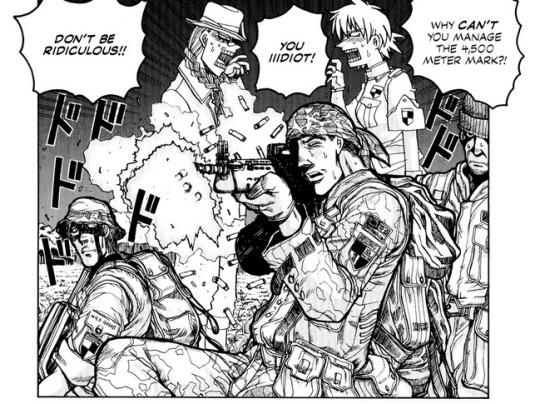
Back to “Balance of Power”, the third part features Seras training with the Wild Geese in the middle of the night. For some reason, Seras expects them to shoot targets from over 4km away. She can do it, but only thanks to the vampiric senses Alucard showed her how to use. It’s like she doesn’t realize that this is an ability she only has because she’s a vampire or something.

Indoors, Alucard and Walter discuss the whole Nazi angle. Al isn’t terribly surprised, because he only knows three who have ever used undead warriors for combat.
1) Hellsing
2) Himself
3) The Nazis.
He knows #3 is legit, because he and Walter destroyed a Nazi research facility during the war. Supposedly that contained all their work on the undead, but now that we know Millennium was smuggling important stuff from Nazi Germany to South America, it only makes sense that they’re the ones who devised the Valentines’ ghoul attack. The bigger point of this scene is to reinforce that Walter used to be a big wheel in Hellsing, teaming up with Alucard to have Golden Age WWII adventures. And now, Hellsing will be sending Alucard and Seras to South America to investigate this new threat.
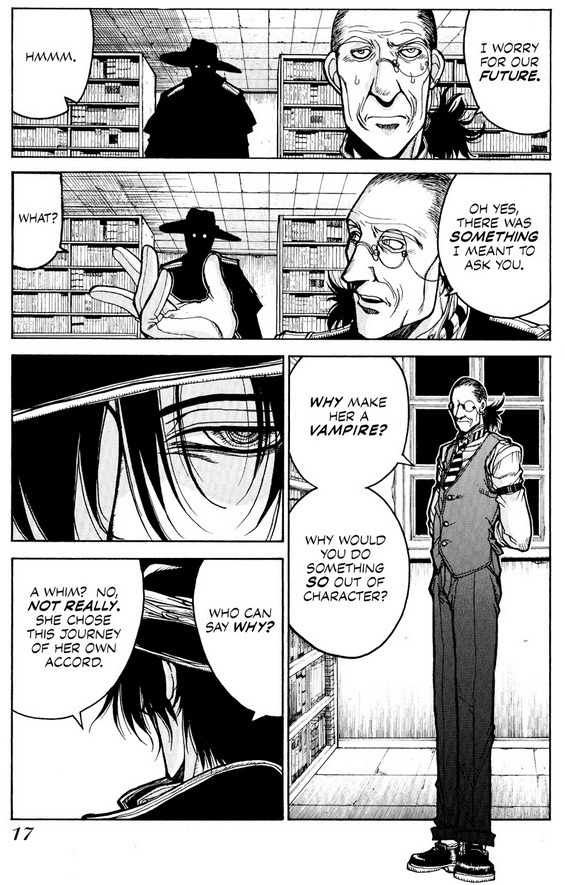
Here, Walter asks the big question: Why make Seras a vampire? I’ll have more to say about this later, but I dig this scene because it works as an exposition scene, but there’s more to it than that. Alucard’s only apparent motivations are over-the-top violence and doing his master’s bidding. Helping Seras doesn’t seem to fit either of those, so it does indeed feel out-of-character. You’d expect someone to ask this question, and by now there’s really only two people left who know Alucard well: Walter and Integra. So yeah, let’s have Walter ask the question. But later on, it becomes clear that the point is not the question itself, but the fact that Walter is the one asking it.
For what it’s worth, Alucard doesn’t seem to know, or maybe he just doesn’t want to spell it out. He keeps saying that it was her “choice”, except he had to make his own choice that night. He could have just let her die, regardless of any requests she might have made. Al remarks on her tremendous resilience on that night, since she was surrounded by death and hopelessness, but didn’t resign to her fate. That impresses him, so I guess we can say that he chose her because he found her to be such an impressive specimen, in spite of some of her goofier behavior. As it currently stands, Seras can’t even travel across rivers or oceans, a weakness for lesser vampires, but not a problem for Alucard himself. He seems to think that’ll all be resolved once she finally drinks blood, and he expects that it’ll just be a matter of time before she does. Ominous!
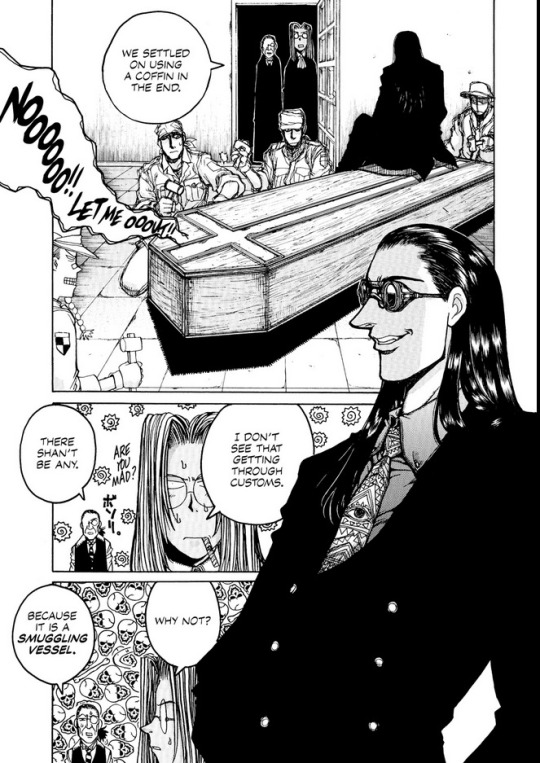
As far as transporting Seras to South America, Alucard figures the easiest thing to do is nail her shut in her own coffin. The Wild Geese know a smuggling operation that can fly them to Brazil without any messy customs. That works out, since they also have to transport Alucard’s coffin, and all the guns.
Integra asks why Alucard is dressed like this, and he says he can’t wear his usual stuff because he’d be too obvious to their enemies. Also, he doesn’t need to spend the whole trip in his coffin, because sunlight and traveling over water doesn’t bother him, I guess? I don’t really get the water thing. If Seras can’t travel over running water, what difference does it make if she’s in her coffin or not? I can accept that Alucard, who’s basically a super-vampire, would be immune to the whole water thing, but it becomes a plot point later on, so... aw, forget it

Integra gives Alucard only one order: Search and Destroy, which seems kind of vague when you think about it. Anyway, she’ll be saying this about a hundred times before the story is over, so we may as well appreciate the original.
#2021hellsingliveblog#hellsing#alucard#sir integra hellsing#walter c dornez#seras victoria#enrico maxwell#pip bernadotte#did i forget anyone?#nah i guess that's it
21 notes
·
View notes
Text
sharon carter & shipping
Okay i’m gonna make something clear. idc if you ship stevesharon or not. idc if you ship buckysharon or not, idc if you ship samsharon or not.
BUT DON’T SAY YOU WANT MORE FROM SHARON THAN BEING “A LOVE INTEREST”
You must wonder why i say that.
Well, ever since catws dropped, ppl had been anti sharon for being in the way of their ship, despite the fact that sharon was Steve’s wife in the comics and they had the longest relationship for Steve. it gotten worse once the leak of the stevesharon kiss. but like INFINITELY WORSE. to the point sharon has been hated for no reason for 5yrs now and emily van camp (the actress) faced a lot of harassment JUST for playing sharon and sharon kissed steve, EVEN DEATH THREATS.
this wasn’t an isolated incident. this was a shared sentiment amongst stevebucky, romanogers, stevepeggy, stevetony AND stevewanda shippers. the only ones i’ve seen that were okay were stevesam (and obviously stevesharon) shippers. hayley atwell even made it worse by making that comment where she enabled more hatred towards emily bc she validated the hatred towards sharon (that sharon was “bad” for kissing steve). also hayley was just fucking jealous bc SHE wasn’t the one playing sharon. and steve ending up with peggy was fan service that destroyed both steve’s and peggy’s character development validated in a way the hatred towards sharon bc it made the kiss kinda incest (which wasn’t the case until now).
not only that, the mcu has a tendency to treat women interchangeably. especially when it comes to sharon. mcu peggy has the personality of sharon in the comics (peggy was barely in the comics, she didn’t have a fleshed out personality), SHARON was the one that teamed up with steve for the winter soldier NOT NATASHA. and now, sharon has batons, which are bobbi morse’s weapons. this wouldn’t bother me as much if not for what i had just said re:peggy & natasha.
now a lot of ppl shipping buckysam are the same very people that were anti stevesharon and anti sharon, especially now that stevebucky is gonzo in the movies. so it’s really at its core misogyny to obsess on a mlm relationship. and if you only care about sharon being wlw so that she doesn’t get in the way of your mlm ship, that’s misogynistic and homophobic as well.
The MCU treated Sharon (and emily vancamp) like garbage so far but she NEVER was “just a love interest” and the ONLY ones saying that it was are just the ones butthurt she gets in the way of their ship.
Ship stevesharon, buckysharon or samsharon. don’t ship stevesharon, buckysharon or samsharon. i don’t give a fuck. BUT STOP SAYING THAT SHE SHOULDN’T BE IN A RELATIONSHIP. THAT’S JUST MISOGYNISTIC.
10 notes
·
View notes
Text
The Elder Scrolls - a disclaimer and rant
I am going to make some posts about The Elder Scrolls, and in particular, its background, setting, and characters. That means that a disclaimer is probably necessary.
Here’s the tl;dr version: yes, I know about the lore. Please trust me when I say that I was really super into it about a decade and a half ago, and I’ve kept an eye on it since. I have read the Michael Kirkbride forum posts. I have read C0DA, The Seven Fights of the Aldudagga, Sermon Zero, the Loveletter from the Fifth Era, and so on. I know the forum roleplays like The Trial of Vivec. I know that Ayrenn is really a time-travelling mining robot from outer space. I think all the stuff I just referenced varies widely in quality, opinions quite reasonably differ on it, and it’s frequently at odds with what’s actually depicted in the games, but at any rate, I promise that I know it.
So when I go on and talk about Psijics – I know, all right? I know. I am choosing to engage with the setting on a level that focuses more on characters, human stories, and, well, the narratives of the games. The TES apocrypha is interesting, but of limited relevance to the things I’m interested in. There are many valid ways to enjoy TES. Okay?
Now, the longer part:
If you haven’t played TES, and… actually, scratch that, for like 90% of people who’ve played TES, none of the above needed to be said. The thing is, when you play a TES game, it is a fairly straightforward elves-and-wizards-and-dragons fantasy setting in the D&D mould. Indeed, the earliest versions of it, back in the 90s, were based on a D&D campaign. So there’s relatively little surprising about it, and “it’s like D&D” will carry you most of the way towards understanding it.
However, TES games are also renowned for containing lots of in-game books you can read, which are often some of the most striking and evocative parts of the games. These are supplemented by a large library of apocrypha: often unofficial material, posted by developers (and ex-developers) on the internet. The most infamous of these writers is Michael Kirkbride, who has some… very unusual tastes and interests, but there are a range of other names as well. In any case, the result is that TES has an ‘expanded universe’ composed of these non-canonical writings. Often canonical texts in-game hint at some of this vast, unofficial hinterland, and sometimes ideas invented in the apocrypha sneak back into the games themselves.
Further, the apocrypha often hints at what seems to be a very different setting to the one directly experienced in the games: one that’s less about warriors and wizards and adventure and more one about divine magic, transcendence, myth, and meaning. The descriptions often seem to be somewhat at odds. This can best be demonstrated with some examples.
For instance, here is Michael Kirkbride’s description of a High Elf warship, written before any game had depicted the High Elf homeland:
Made of crystal and solidified sunlight, with wings though they do not fly, and prows that elongate into swirling Sun-Birds, and gem-encrusted mini-trebuchets fit for sailing which fire pure aetheric fire, and banners, banners, banners, listing their ancestors all the way back to the Dawn.
This is Old Mary at Water.
You will immediately notice two things. The first is that this sounds really cool. Some of it you need some context to parse (the old elven homeland is called ‘Aldmeris’, hence ‘Old Mary’ as a mocking nickname given by its foes; the High Elves believe that they are literally, genealogically descended from the spirits that created the world at the Dawn), but even so, man, that warship sounds awesome. This Kirkbride guy can write. The second thing, though, is that it is extremely unclear what any of this even means. Given that descriptions… what does this ship look like? Try to picture it! What the heck does ‘crystal and solidified sunlight’ look like? How exactly does a trebuchet throw fire? What?
You might then go on to play a video game where the High Elves are taking part in a war to conquer the continent. If you’re like me, you’re probably keen to see one of these fabled warships. But then it turns out that in-game, High Elf ships look… like this. Or like this.
(Indeed, the High Elves are often a good example of this. An earlier written text, in a pamphlet enclosed with the video game Redguard, described the elven capital of Alinor as “made from glass or insect wings” or “a hypnotic swirl of ramparts and impossibly high towers, designed to catch the light of the sun and break it into its component colours”. Needless to say, should you visit it in a game, it does not look like that.)
After a while, you start to notice that there is very little connection between the world implied by the apocrypha and the world experienced in the games. Kirkbride says that the “closest mythical model” for the ancient knight Pelinal “would be Gilgamesh, with a dash of T-800 thrown in, and a full-serving of brain-fracture slaughterhouse antinomial Kill(3) functions stuck in his hand or head”, and says “Pelinal was and is an insane collective swarmfoam war-fractal from the future”. Indeed in Kirkbride’s descriptions Pelinal seems to have been an ultraviolent schizophrenic who led a wild, genocidal band of anti-elven warriors, was very definitely gay, and who had only a red, gaping hole where his heart ought to be (which in turn is a reference to the missing heart of the creator-trickster deity Lorkhan, whom Pelinal was in part a mortal incarnation of). You might find that really cool or you might find it banal, but there’s no denying that it’s extremely different to the Pelinal whose ghost you can meet in-game. The apocryphal Pelinal is a mad butcher whose closest mythic model, contra Kirkbride, actually seems to be Achilles; the game Pelinal is a straightforwardly sympathetic chivalric knight. This is complicated somewhat by the in-game books being written by Kirkbride and therefore being gonzo bananas insane, so the ‘canon’, such as it is, is unclear – but at any rate it is impossible to deny that there’s an incongruity.
I could go on with examples for a long time. I haven’t even mentioned the most famous – the 1st edition PGE description of Cyrodiil compared to what it actually looks like in Oblivion – or more recent ones, like the gulf between Alduin the mythic dragon who will consume the world and indeed time itself in its terrible jaws and the frankly quite underwhelming beastie you fight in Skyrim. The point I’m making is that there are effectively two TES settings: one relatively down-to-earth, immersive, and depicted in great detail in the video games, and one that’s this absurd mash-up of magic and science fiction and whatever psychedelics Michael Kirkbride has been taking this week.
I write this long disclaimer because it has been my experience discussing TES in the past that people who are mostly interested in the former – in the relatively grounded setting experience in the games – sometimes run into an elitist attitude from people who are interested in the latter. Sometimes fans of the apocrypha can come on much too strong, or gatekeep the idea of being a fan of ‘TES lore’. Any sentence that starts with “actually, in the lore…” is practically guaranteed to go on to be awful.
My point is not that the apocryphal TES is bad. As I hinted above, in my opinion its quality varies extremely widely: there are things that Kirkbride has written that I think are pretty cool (I unironically love the Aldudagga) and there are things he’s written that I think are indulgent tripe (C0DA stands out). Ultimately it’s all about what you enjoy, and I would never try to tell anyone that they shouldn’t have fun reading or speculating about or debating the zaniness of some of these texts. Indeed, as far as online fandoms and video game fan fiction goes, TES probably has the most fruitful ‘expanded universe’ that I’ve ever seen, and I think that’s wonderful. Kirkbride himself has said that “it’s really all interactive fiction, and that should mean something to everyone” and “TES should be Open Source”, which is a position I wholeheartedly endorse – and does a lot to take the edges off some of the worse things he’s said.
Rather, my point is that everyone should enjoy what they feel most interested in, or most able to enjoy. Further, I argue that there is absolutely nothing wrong – and for that matter absolutely nothing less intelligent or less intellectual – about a person preferring to engage with the version of TES most clearly depicted in the video games. Part of this might be defensiveness on my part, because in my opinion what TES has always done best is a nuanced depiction of cultural conflict: this is particularly the case in Morrowind and Skyrim, and ESO’s better expansions tend to deal in this area as well. As such I take relatively little interest in the metaphysical content of much of the apocrypha. For me, Shor, say, is most interesting as the protagonist of several conflicting cultural narratives, rather than as a metaphysical essence.
I would also argue that the most recent game content has taken a good approach by going out of its way to legitimise a range of possible approaches to the setting. The latest chapter of ESO, Greymoor, includes a system where the player can dig up ancient artifacts, and a number of NPC scholars will comment on them for you. This allows the game to indicate in-character scholarly disagreement over issues fans have previously debated. One item shows disagreement over whether the mythical character Morihaus was literally a bull, or a minotaur, or whether he was a human allegorically referred to as a bull. Another one points to disagreement over the possibility of magical spaceships: apocryphal materials have referred to ‘Sunbirds of Alinor’, ‘Reman Mananauts’, etc., as sorts of magical astronauts, but that seems so ridiculous given what we’ve seen in the games as to be easily discounted. I like items like this in-game because they seem to say to players, “It’s okay to disagree over questions like this – no one is doing TES wrong.”
That said, I am reasonably positive that I’m in the minority here, because I am in the camp that usually says that legends exaggerate, and so Morihaus probably wasn’t a bull and magical spaceships don’t exist. This is not a popular position. My reason, of course, is that I think tales are more likely to grow in the telling rather than shrink, and I have a dozen of what I think are hard-to-deny examples of this happening in TES (e.g. heroic narratives of the War of Betony are very different to the grubby reality you uncover in Daggerfall, or Tiber Septim is almost certainly from Alcaire rather than Atmora). However, this means that I openly take an opposite methodology to Michael Kirkbride. Kirkbride was once asked by a forum poster whether some in-game writings are exaggerated. His reply was: “I prefer, "It is very possible, as is the case throughout this magical world, that some of the exaggerated claims made about some subjects pale in comparison to the Monkey Truth. ZOMGWTFGIANTFEATHEREDFLUTYRANTS."”
Needless to say, I find this implausible, and it means that, for example, I interpret the Remanada as an obvious piece of propaganda, inventing a story about Alessia’s ghost in order to retroactively explain why Reman, probably born the son of a hill chieftain with zero connection to the previous dynasty, really has imperial blood. This is a very different but in my opinion more historically plausible take than Kirkbride’s, who has a naked thirteen year old Reman standing atop his harem and slaughtering recalcitrant followers.
I’m not saying that my approach is objectively correct. It’s all fiction – and as Kirkbride said, TES is open source. The only thing that matters is what you the reader, player, or interpreter find the most interesting. For me, that means generally favouring what is seen in the games over the developer apocrypha, which I can take or leave.
At any rate.
I’m going to go on and make some more fannish posts about stuff in ESO that I liked.
Just… if it’s relevant, be aware that I am familiar with the zany stuff. Some of it I like, a lot of it I don’t like, and I feel no obligation to use it if I don’t like it.
There. Disclaimer over.
11 notes
·
View notes
Text
I have tons of thoughts on Black as Night. They are again under the cut for length and some spoilers for other books.
Per usual, short things first:
"Knowing you, you’ll walk right into some huge mess. And you’ll need me to extricate you from it, again.” - Fish gets that point because, yes, technically he did rescue Bear by sending the police to St. Lawrence’s.
Fish offering to fight Bear for the last roll at breakfast, and Bear just goes “Not a chance.”
“Thank you. I think.”
I'm not sure if it’s significant, but it is kind of interesting to compare Fish’s reaction to Rose’s play here to his reaction a year later in Waking Rose.
The way Fish instantly notices something is wrong at the apartment. Also, he has skeleton keys? I mean, that doesn’t really surprise me, but still an interesting comment, ESPECIALLY because it doesn’t come up when Ben is locked out of the Fairston house at the end (does he only carry them when he's on the streets?).
So, the plants Blanche was watering were herbs. So, who’s the cook - Fish? Both of them?
Fish’s reaction to the DEA agents informing them they’re under arrest - I will, again, point to what Fish says in Waking Rose about going through something awful a second time is worse than going through it the first time because you know how bad it is and what you can endure.
Ahh, yes, the “to be able to give all of himself, without reservation” idea, which will come up again at the end of Waking Rose with Ben.
I love how Bear credits the Briers for helping transform back into himself.
I do appreciate that Bear tried to keep his distance a bit since he wasn’t sure where he was going and he didn’t want to hurt Blanche. Not saying it didn’t cause problems, but I appreciate the intention and the fact that he at least tried to keep some problems from occurring.
“Oh, nothing gets [Ben] down.” Not true, as Bear well knows, but he also knows Ben likes his carefully constructed front, so he’s sticking with it.
Fish getting the taxi always makes me think of Gonzo in The Great Muppet Caper yelling “TAXI!!!” and flinging himself in front of the oncoming one; sadly that moment does not appear to have been giffed or I would add it in here.
Blanche trying so hard to walk the line between being cautious and being paranoid - very relatable.
Bear specifically commenting that Mrs. Foster treated him and Ben like two more sons!
I had forgotten that Ben is the one who takes the lead in introducing Mrs. Foster and Mrs. Brier.
Fish suggests flushing the drugs down the toilet - no evidence, no case. (The Briers do not agree with this, as they should not.)
Bear again regrets getting involved with the Briers, but Fish is the one who says, no, he’s not taking Rose and Jean back to their house while they’re being tailed - it’s not safe.
Fish flips between giving Rose advice about how to work incognito and telling her not to do anything remotely dangerous - not sure if it’s because he’s pretty sure he won’t be able to keep her out of trouble or if it’s him just trying to explain why she wouldn’t make it incognito.
I really noticed this time how everything from Blanche’s perspective never refers to her by name (unless I missed something). I don’t think she thinks of herself as Blanche anymore - at least not until she realises Bear is back. And then, she only thinks of herself as Blanche once, but it still happens.
I also appreciate that the breakthrough with the photographer came from a combination of Rose's insight into jealousy/human nature and Fish's practical comment about the extremity of emotion it would require.
"Did they really say you couldn't even speak to me?" definitely parallels "Did God really say..."
I knew the showdown in the entryway was tense, but I’d forgotten that Rose gets shot at twice - probably further cementing Fish's opinion she should avoid dangerous things - and Bear barely manages to keep Fish from getting shot in the head.
Bear asking Fish if he wants him to come back and help with the paperwork for the Mirror Corporation and Fish telling him in no uncertain terms that he needs to be out there looking for Blanche and not to worry about (tact or not, he doesn’t even hint to Bear that he wouldn’t be much use on the legal side).
Only a few longer comments:
I feel really thick, but it was just in this last reread that I made the connection between “Bear” and “Arthur” (usually attributed to being derived from the word for “bear”). Which made me look up Benedict (“blessed”, which I had guessed based on “benediction”), as well as Alistair (”defending men”, which doesn’t seem significant), Catherine (etymology is unclear, but one association is the Greek word for “pure”, which does seem fitting), and Elaine (unclear, probably derived from “Helen” which could mean “torch” or “moon”). Which doesn’t really tell me much, besides the fact Arthur is fitting and there’s some irony (at least for a while) in Benedict.
I appreciate the flashbacks with fifteen-year-old Fish and sixteen/seventeen-year-old Bear and finding the drugs and being arrested. Fish tries to argue his way out and then asks to call the lawyer, while Bear is confused and uncertain. And then we get a continuation of this in their present-day arrest and interrogation.
I know we wouldn’t have a story if she had, but there’s a part of me that wonders why Blanche never brought up being stalked to Fish. Was she afraid he wouldn’t take her seriously since her mom and Rose didn’t? Could she tell he was really trying to keep his distance and knew he was busy and didn’t want to bother him with what could just be her fears? I just think if he thought there was any basis whatsoever to it (and I think he would’ve treated her comment seriously), he would have dug into it quite thoroughly.
I try not to let it bother me, but I still notice the holes in continuity: Steven is still at St. Catherine’s a year after the Dennistons’ arrest, though per the yearbooks in The Shadow of the Bear he was a senior the year they were arrested. In The Shadow of the Bear, Mrs. Foster says the Dennistons were over all the time with Steve, but in Black as Night, Bear says they met Mrs. Foster when Steve brought them home after meeting them at the subway. Also, it’s Steven in The Shadow of the Bear but Stephen in Black as Night. And the Fosters live in a house in The Shadow of the Bear, but Bear says the Fosters’ apartment was their temporary home for years.
Fish's attitude is really informed by a) him thinking only he and Bear (and appropriate professional legal and law enforcement members) should be involved in messy situations and b) "I do not want to be the person responsible for depriving the world of Rose Brier." It wasn't his fault but he definitely felt responsible last time (been there, done that, no repeats please).
At the end, Bear thanks Fish, saying he's always indebted to him (which is great, but also - Bear has saved Fish before too). But, Fish thanks Rose - and there is a pattern in Fish being critical in saving Bear, and Rose being critical in Fish being able to do that. Fish has been so used to it being him and Bear against that bad guys, that I think the end here is him recognising they’re not enough on their own, at least not always. And so we get him thanking Rose for grabbing the door, and him being thankful for Agent Hunter showing up just at the right time too.
Again, there wasn’t a need in the story, but I still would have liked to see the reunion of Blanche with her mom and Rose.
#Black as Night#Regina Doman#Fairy Tale Novels#FTN#This is quite long but I didn't touch on huge chunks/elements of the book still XD#If I can put my thoughts together Mrs. Foster is going to get her own post at some point#Also Waking Rose is sitting there just waiting for me#So fair warning
5 notes
·
View notes
Note
otp request— 30 21 14 please
I’m gonna assume this is for Renruki, since it wasn’t otherwise specified. I’m gonna answer them a little out of order, I hope you don’t mind.
21. How have they changed each other for the better/for the worse?
This is a little tricky to answer, because they grew up together, and have been huge influences on each other’s lives, plus it’s hard to pull out what’s them and what’s Inuzuri and what’s their zanpakutou and what’s Byakuya, it’s just a real rich tapestry, y’know?
So, anyway, I’m gonna dodge the meatier part of that question (as if I haven’t written 300k words of fanfic on the topic) and focus on their post-reunion period.
For the better: I think Renji is an extrovert and Rukia is an introvert, and he’s helped her be more comfortable around large groups and to be more social generally. Rukia has helped Renji’s self-confidence a lot (mostly by yelling at him when he gets down on himself) and helped him take pride in his accomplishments.
For the worse: They both have absolutely bananas taste in fashion, particularly Living World fashion, and they bring out the worst in each other. Like, if they get dressed separately, Rukia will show up in a cute little t-shirt dress and Renji in jeans and a flannel. But if they go thrifting together, they’ll come back with Rukia in a muppet fur jacket over a tube top and Renji wearing one of those t-shirts that looks like a tuxedo and short shorts that say “Nasty” on the ass.
Exhibit A:


This also happens in a broader sense, where if one of them gets some gonzo idea, the other will not talk them down, they will get sucked in and things will tend to escalate into utter madness.
14. What would be a dealbreaker?
I am not sure they really have “dealbreakers.” They've known each other a really long time, they were formative influences on one another, and I think they have a pretty similar set of values and life-philosophies. They both have a tendency toward self-sacrifice, so a bigger problem is that either one would “let go” if they thought they were holding the other back or getting in their way. In the fanfic trope where it looks like one or the other of them has some other romantic interest or there’s the threat of Rukia getting slapped with an arranged marriage, there’s a tendency for each of them to sort of hang back and not speak up their feelings until they’re concerned that the other is going to be unhappy. (This is kind of a weak trope and I do not care I fall for it every time)
There’s also the period right where they get back together when I think there were a number of moments that could have been dealbreakers but just... weren’t. I’ve seen a number of fanfics where Rukia is upset that Renji is more loyal to Byakuya than he is to her, except that a) when push came to shove, Renji actually did side with Rukia and b) Rukia is also a huge Byakuya stan for some inexplicable reason. Rukia also is really ride-or-die about her Karakura friends, and she has a few moments where she’s prepared for Renji to not be willing to say, risk his career by deserting for their sake, but this man is always down to clown (for friendship). Similarly, that time in the Fullbringer Arc when someone suggested that mmmmmaybe immensely powerful Substitute Shinigami with no accountability whatsoever were not in the Gotei’s best interest and then I guess the Captain-Commander made Renji deliver this news to Rukia because she would have murdered anyone else.
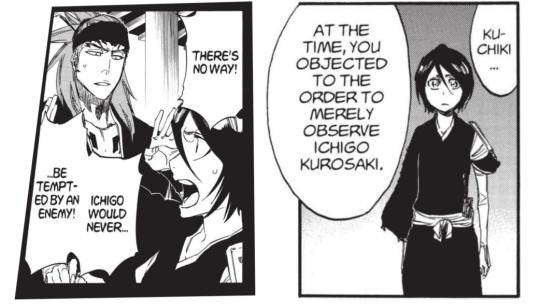
Look, he’s got an entire delivering-bad-news-to-Rukia stance, I can practically hear his soothing tone of voice: “You know I love and respect Ichigo, you know I would never do anything to prevent him going ham on this or any other plane of existence, I am just telling you that there have been concerns...”
PS: They would never cheat on each other. They might break up if one of them fell in love with someone else, or depending on who the third party was, I can definitely see them trying an open relationship, but cheating would be a huge betrayal for either of them. So I guess, in that case, it would be a dealbreaker. Now I am mad I even had to think about it.
30. Write a short exchange of dirty talk between them.
Anon, why? Have you met me? Why would you pick this one?
Ughghghghghgh, you all know I can only do dirty stuff if it’s high concept, so please enjoy this brief dialogue from a universe where they hooked up immediately after the Soul Society arc and are ogling each other in their Advance Team school uniforms (it’s like... PG-13 at worst, but also terrible)
“It looks like it fits pretty well to me.”
“It looks like it fits pretty well to me.”
“Well, it fits okay if I just stand here, but look what happens when I flex my arm.”
“Hmmm… is that uncomfortable? It is...very...tight.”
“Not really, but I’m a little worried about the shoulder seams.”
“Turn around and do it again... No, I don’t really think it’s a problem.”
“No? Oh, and look what happens if I try to reach for something.”
“Aah, your little abs are so cute!”
“You think so? But is that acceptable? I mean, this is school, right, like a place of learning?”
“Do the reaching thing again. And I don’t understand these uniforms at all, frankly. Look at this little tiny skirt!”
“It’s pretty inappropriate, in my opinion.”
“And I’m just standing here! Look what happens if I have to pick something up! Or tie my shoe! My shoes don’t actually have laces, but you are getting the idea, right?”
“I am… getting the idea.”
“Or what if I had to kick someone? You say stupid things sometimes, and I have to kick you, and I’m going to end up giving you an eyeful, that would be terrible, right?”
“I’ll just have to watch my mouth, then. Make sure I say what I mean to, eh?”
“Since when have you ever been able to do that?”
“Since I knew what the consequences were.”
“Mmmm… hey, Renji?”
“Yeah, babe?”
“How are the pants? They look like they might be a little tight.”
“They are definitely a little tight.”
28 notes
·
View notes
Text
Manifesto?
I guess this isn't really a "manifesto," since I don't plan on doing anything. It's just a collection of what I think are the best ways to go through life. I just thought it might be fun and useful to have a list somewhere of my personal philsophies and mottos. So, without further ado:
Honesty Is The Best Policy
When I say "honesty is the best policy," I'm not talking about being a dick for no reason and just telling it like it is because you're just oh so honest. I'm talking specifically about conflict. If I have a problem with someone, they'll know. Sometimes it takes me a while to figure out that I have a problem with someone, and sometimes it takes me a while to figure out how to word what that problem is. But once I know what I'm feeling, you will too. I just find that dragging things out is so unnecessary, and it often makes the situation worse. Addressing conflict immediately means avoiding even more conflict. And don't be fooled, "conflict" is not a dirty word! Conflict can 100% be a peaceful exchange with a quick resolution. In my personal opinion, being honest (and gentle) from the get-go is the best way to mitigate most conficts.
Listen Without Judgment
I always do my best to refrain from judgment, especially when it comes to someone’s past. Who a person is now is more of a reflection of who they are than their past. I also try to reserve judgment on someone’s situation or circumstances. The fact is, I probably don’t know the full story, or all of the facts, so it’s not my place to judge it. If I do know the full story/all the facts, that’s different.
When A Person Shows You Who They Are, Believe Them
Pretty straight forward. Throughout my life, I have given too many chances to undeserving people. No more. You get one chance. You fuck it up, gonzo. Maybe if enough time goes by, I’ll be willing to rethink my position, but that is a rare gift. I’m done convincing myself that someone can change unless they really fucking prove it. I’m done convincing myself that people are deserving of a relationship sequel. My trust is hard won, easily lost, and almost impossible to regain.
Hit Back Twice As Hard
(I didn’t say these would all be healthy!) It’s really difficult for people to actually hurt me. If I decide you are a person of zero or little consequence, your words have no meaning to me. The most you can do is make me extraordinarily angry, which certainly does you no favors, but even that is usually due to attacking my loved ones, not me. I won’t lie, I can be triggered, as I have trauma and mental illnesses, but even then, I tend to recover pretty quickly, depending on what your relationship is to me. All this being said, when someone intentionally attempts to hurt me, I always come back swinging with at least double the force. At my core, I’m a kind person and I would never go out of my way to do harm. But I’m all too prepared when someone attacks first. I have a lot of rage bottled up inside me, and it’s not a pretty sight when it’s released all at once.
Self-Care First
For most of my life, I’ve had a bad habit of putting others, particularly people I love hard, above myself. This has often benefited abusers, who have taken advantage. Recently, I have made the decision to take care of myself first. That means removing myself from emotionally harmful situations, putting up less flexible boundaries, and attending to my own needs before others’ needs, among other things. This also includes my well-intentioned loved ones, who, of course, have been respectful and supportive of this change, just as I am of their needs and boundaries. Everyone is the main character of their own story, and as such, everyone owes it to themselves to put their happiness first.
Specificity Breeds Clarity
I have to be honest, this one isn’t original, I learned it from an acting teacher of mine! However, I find I can apply to myself and to life, in addition to my work. You should always make an effort to understand yourself better. (Especially if you suffer from mental illness[es]!) What are your habits? What are your behaviors, good, neutral, and bad? Why do you do them? What are your feelings, good, neutral, and bad? Why are you feeling them? Who are you? What do you want? What do you like? What do you hate? What are your needs? Why do you need them? And so on and so on and so on. The more you understand about yourself, the easier it is to work on the things you don’t like and develop the things you do! Same goes for life itself and the world around you. Ask as many questions as you can, and answer as many of them as you can. It’s not always easy, but it’s always beneficial!
Be Honest With Yourself
I suppose this is an expansion on the previous one. If you’re not honest about your toxic behaviors/coping mechanisms, your problems, your fears, your weaknesses, etc, you can’t change them. It’s like they say: admitting you have a problem is the first step. It can be really, REALLY challenging (and scary!), but it’s always worth it in the end.
Embrace Your Individuality
I’ll admit, I struggle with this one. I’ve never fit in, not once in my life. There’s always been a part of me that has longed to be like everyone else, to fit in more easily, to be accepted by the gang, whoever the gang may be at any given point. But the fact is, being like everyone else is boring. March to the beat of your own drum! Don’t just accept what makes you different, love it! Be open about it! Let your freak flag fly! Who knows? Maybe you’ll find other weirdos to bond with.
Live In The Gray
Black and white thinking is something I struggled with a lot before I was diagnosed with Borderline Personality. I know a lot of other people, even neurotypical people, struggle with it too. Most things in life are not black or white, good or bad, right or wrong, etc. (Most things, some definitely are, but they are few and far between.) Two things can absolutely be seemingly opposing and still both be true! Take the time and consider all sides to every situation, even if that means putting yourself in someone else’s shoes, or going against your own nature. This takes effort, and self-awareness, and it’s definitely a skill to be developed. But once you get the hang of it, it makes life a lot easier, and a lot more interesting.
Always Be Reflecting
Surprise surprise, you’re not always in the right. In fact, sometimes, you’re in the wrong. Sometimes (usually), you’re both right and wrong, or no one is right or wrong. Either way, it’s important to reflect on your actions, open your heart, empathize with others, and ask yourself the difficult questions such as, “How would I feel if someone did this to me?” This is especially true of immediate and recent conflicts, but it’s also true of the distant past. While I am a big proponent of “you are who you are now, not then,” the fact is, your past is still a part of you, and even if you left it behind, other people who may have been affected by your actions might not have. It never hurts to revisit the past. Has your opinion changed? Did you make a mistake? How could you have handled that situation differently, or better? Sometimes it’s painful, especially if it’s not something you can “fix,” but reflection is one of the most crucial tools for self-improvement.
Stand Your Ground
Sometimes, you are in the right. If, after you’ve thought it through, you feel strongly that you are completely in the right (or even mostly, depending on the circumstance and who the conflict is with), stand your fucking ground. Do not let people push you around, bully you, guilt you, or otherwise manipulate you. Particularly if you have used the tools I’ve previously addressed in this very document.
Note: I don’t necessarily mean use force or get angry. Especially since doing so might suddenly make you less blameless. Just know you are justified in your feelings and stick your flag in the sand. If other actions are necessary later, you address it then.
You Shouldn’t Complain If Your Misery Is Your Own Making
If everything that’s going wrong in your life is a direct result of your own actions and choices, instead of victimizing yourself, you should take the time to reflect on those actions and choices so you can learn from your mistakes, grow, and become a better person. I see far too many people complaining about things in their lives that are honestly their own faults. (Of course, I’m not talking about mental or physical illnesses. I’m referring specifically to actions they took and decisions they made that resulted in things they didn’t like.) If you push someone away, they’ll leave you. If you make a wrong choice, there will be consequences. Instead of blaming everyone else, take responsibility for your own life.
Feelings Are Valid, Behaviors Are Not
I don’t know why it took me so long to add this on here. Out of everything on the list (so far), this might be the one I manifest the most. I swear I mention this concept in at least a third of my blog entries, probably more. Feelings are always valid. They’re a natural, human response to stimuli. (Note, the words “valid,” “healthy,” and “justified,” do not all mean the same thing!) However, the behaviors you engage in due to those feelings are not always valid. You can be angry, but that doesn’t give you the right to hurt someone, physically or emotionally. You can be anxious, but that doesn’t give you the right to prevent someone from taking space if they need it. Etc etc etc. You don’t get to take your feelings out on other people, or behave however you want just because you’re feeling a certain way. It’s not right. Behaviors are within your control. (And when they are not, you still need to take responsibility for them and do the work to get them to the point where they are.) Don’t let anyone tell you your feelings aren’t valid. But don’t use those valid feelings to justify toxic, or otherwise harmful behaviors.
-
I’m hoping this will be a living document. I’ll try to continue adding to it as I think of more philosophies!
3 notes
·
View notes
Text
A Year in Review: The 25 Best Films of 2019
This list may seem a few months late from the rest of the media, but I consider the movie season to stretch 14 months, from the start of the Sundance Film Festival in January through the end of the Oscars ceremony in February. This year's movie season was shortened as the 92nd Academy Awards were held about three weeks earlier than usual, commencing on Feb. 9. Of course, South Korean director Bong Jon-ho's "Parasite" took home the Best Picture prize making history as the Academy's first-ever non-English language film to take home the top award.
Now that the Oscars have officially wrapped up, and the 2020 movie season is revving up (to a weak start), I feel comfortable with sharing my favorite 25 films of 2019. From box office hits to smaller gems, below is a breakdown of the top films that debuted last year.
25. “The Beach Bum,” directed by Harmony Korine

24. “A Beautiful Day in the Neighborhood,” directed by Marielle Heller
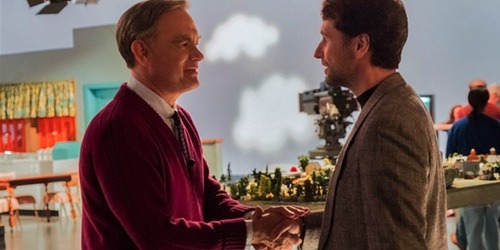
23. “Toy Story 4,” directed Josh Cooley

22. “Alita: Battle Angel,” directed by Robert Rodriguez

21. “The Lighthouse,” directed by Robert Eggers

20. “A Long Day’s Journey into Night,” directed by Bi Gan

19. “Doctor Sleep,” directed by Mike Flanagan

18. “6 Underground,” directed by Michael Bay

17. “Uncut Gems,” directed by Josh Safdie and Benny Safdie

16. “The Nightingale,” directed by Jennifer Kent
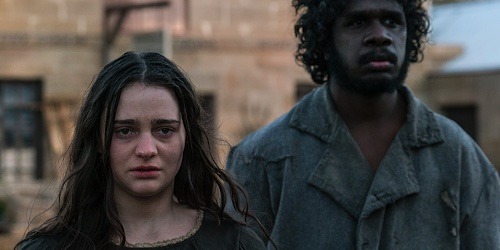
15. “Hustlers,” directed by Lorene Scafaria

Lorene Scafaria's "Hustlers" might be the most fun film of 2019, composed of brilliant shots and serving as a spotlight to showcase Jennifer Lopez's talents. Mostly set during the 2008 recession, the film is a condemnation of late stage capitalism while following a group of strippers, played by Lopez as well as Constance Wu, Keke Palmer, Lili Reinhart and more, who drug wealthy men and steal from them — until their crimes catch up with them.
14. “The Farewell,” directed by Lulu Wang

An impressive debut feature from Lulu Wang, "The Farewell" is a special kind of family tale, featuring a breakout performance from comedian Awkwafina. Rooted from Wang's true story (which was first turned into an episode of "This American Life"), "The Farewell" is unlike any kind of family drama you've seen; a deeply personal, sad but ultimately uplifting film about the things we choose to tell (and not tell) those closest to us.
13. "Asako I & II," directed by Ryusuke Hamaguchi

Following up his six-hour film "Happy Hour," Japanese filmmaker Ryusuke Hamaguchi's "Asako I & II" clocks in at just two hours but still manages to pack in a number of the same themes. Here, a young woman named Asako (Erika Karata) briefly falls in love with a handsome boy named Baku (Masahiro Higashide) in her hometown in rural Japan before he suddenly vanishes. After moving to Tokyo a few years later, Asako spots Baku — but he tells her his name is Ryohei (also played by Higashide). From there, a relationship blooms and unravels. Similar to "Happy Hour," Hamaguchi's effortless ability to draw an emotional response from the ebbs and flows of deep, personal relationships (between friends, family, lovers) is unparalleled.
12. "Climax," directed by Gasper Noé
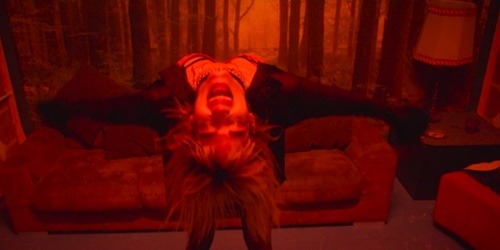
Gasper Noé is often hit-or-miss with most movie audiences. His films are always provocative and his latest feature "Climax" is no exception. Set in the 90s, a French dance troupe rehearses a routine ("Climax" opens with the single best scene of 2019) before celebrating for the night with some snacks and sangria — which someone has spiked with LSD. The rest of the film plays out like a perverse whodunnit while the group, led by Sofia Boutella, tries to figure out what's going on before losing their minds and allowing deep secrets ruin their lives.
11. "The Irishman," directed by Martin Scorsese

Martin Scorsese's long-awaited return to the gangster flick resulted in a three-and-a-half-hour epic. "The Irishman," which reunites Marty with Robert De Niro and Joe Pesci, also stars Al Pacino (the first time the actor appeared in a film by the acclaimed director), as Jimmy Hoffa. The film is Scorsese's most meditative work outside his films about religion. There is as much subtext to the film as there is text, making "The Irishman" a dazzling feat of filmmaking and storytelling, featuring outstanding performances from its three leads.
10. "Gloria Bell," directed by Sebastián Lelio

Since his 2017 breakout film "A Fantastic Woman," Sebastián Lelio's career has been quite quiet. Nevertheless, the English-language remake of his own Chilean-Spanish film "Gloria," re-titled "Gloria Bell," is a stunning piece of filmmaking. Starring Julianne Moore as the titular character, the film follows the middle age single woman through the ups and downs of her dating and family life. It's an unassumingly beautiful film that is gorgeous and features one of Moore's best performances to date.
09. "Her Smell," directed by Alex Ross Perry

Alex Ross Perry's career has dramatically shifted since working with Elisabeth Moss on the 2015 thriller "Queen of Earth." Instead of making quirky New York City centric love stories (a la Noah Baumbach and Woody Allen before him), Perry once again teams up with Moss for "Her Smell." Structured like a five-act play, the film follows Becky Something (Moss), the leader of an all-girl punk group. In what is Moss's best performance to date, Becky is an addict and downright evil at times as she manipulates those around her. It's a dizzying feat of filmmaking that puts Moss to the test.
08. "Ad Astra," directed by James Gray
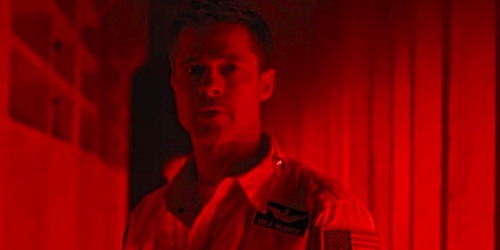
Brad Pitt won the Oscar for his performance in "Once Upon a Time... In Hollywood," but "Ad Astra" was his best performance in 2019. Following up his 2016 masterpiece "The Lost City of Z," director James Gray continues on his path of making ambitious epics, moving from the Amazon to the depths of our solar system. Here Pitt's Roy McBride is on a mission to find his father (Tommy Lee Jones), who is literally lost in space. Roy has to confront his issues with his father as he battles moon pirates, rabid baboons and his inner demons. "Ad Astra" is not only an impressive film for Grey, but Pitt's turn as the sad spaceman is nuanced and shows how much range the Hollywood icon actually has.
07. "Honeyland," directed by Ljubomir Stefanov and Tamara Kotevska
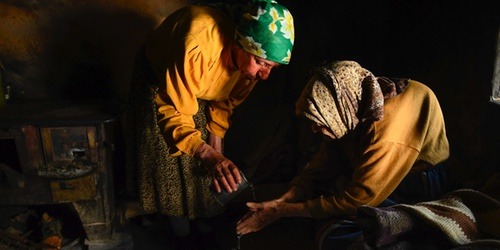
"Honeyland" made Oscars history when it became the first film to be nominated in both Best International Feature Film and Best Documentary Feature — and for good reason. Clocking in at just 85 minutes, Ljubomir Stefanov and Tamara Kotevska's stunningly beautiful film follows Hatidže Muratova, a beekeeper living in a remote village in North Macedonia. But "Honeyland" is so much more than that; it's a universal story about our delicate ecosystem, fickle Mother Nature, taking care of our family and having bad neighbors. In what may seem like a specific tale turns out to be incredibly relatable, with Stefanov and Kotevska achieving some of the best nonfiction filmmaking in years.
06. "Once Upon a Time... In Hollywood," directed by Quentin Tarantino

Quentin Tarantino's penultimate film "Once Upon a Time... in Hollywood" is a love letter to Tinseltown. Here, he honors the summer of 1969 as the film industry is thriving with newcomers like Sharon Tate (Margot Robbie) and aging stars like Rick Dalton (Leonardo DiCaprio in his best performance ever). Rick is a TV villain and his stunt double Cliff Booth (Brad Pitt) is along for the ride. "OUATIH" is more of a hangout movie than something one would expect from QT; it's more in line with the sophistication of "Jackie Brown" than the over-the-top cartoon violence found in "Django Unchained." Like Martin Scorsese's "The Irishman," "OUATIH" is a contemplative and meditative look at aging, youth culture and America through the prism that is Tarantino.
05. "Midsommar," directed by Ari Aster

Following up his horror masterpiece "Hereditary" just one year later, Ari Aster returned with the daylight gonzo vacation nightmare "Midsommar." Like with "Hereditary" and its star Toni Collette, Ari gets a stunning performance out of rising star Florence Pugh, who plays Dani. She just suffered a major tragedy and is decides to go on a trip to a remote village in Sweden with her aloof boyfriend (Jack Reynor) and his college pals. The trip, of course, is worse than anyone could have imagined and plays out in complete sunlight, making Aster's daytime nightmare incredibly upsetting and one of the most vibrant horror films ever made.
04. "Pain and Glory," directed by Pedro Almodóvar

Spanish auteur Pedro Almodóvar returned last year with "Pain and Glory," unlike any movie he's made in his nearly 40-year career. It's a deeply personal film and one of his most quiet and contemplative. It also reunites the filmmaker with Antonio Banderas — in his best role ever — who starred in Almodóvar's earlier films and his 2011 horror film "The Skin I Live in." Despite it being far removed from Almodóvar's oeuvre, it still fits in snugly with his work, resulting in a beautiful and self-reflexive film about age, lost love and the past.
03. "Little Women," directed by Greta Gerwig
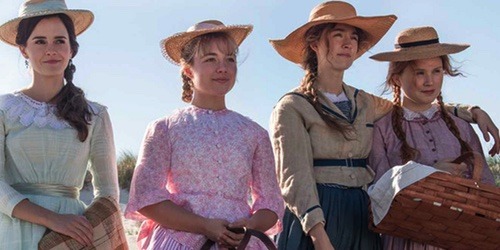
On paper, remaking "Little Women" in 2019 might have seemed like a fool's errand. But Greta Gerwig's take on the classic story, and her follow up to her breakthrough film "Lady Bird," gave a new purpose to Louisa May Alcott's centuries old story about the March sisters living in Concord, Mass. During the Civil War. Here, Gerwig assembles the hottest cast of 2019 (Saoirse Ronan, Timothée Chalamet, Florence Pugh, Emma Watson, Laura Dern, Eliza Scanlen, Bob Odenkirk, Louis Garrel, Chris Cooper and Meryl Streep), enlists Alexander Displat for the score and Yorick Le Saux to carry out luscious cinematography. But it's Gerwig's breakdown of the story and her daring changes to the novel that make her rendition of "Little Women" vital and beautiful. She manages to retain the Alcott's tone and vibrance while bringing something wholly original to a story we've seen time and time again, proving Gerwig is a master storyteller.
02. "Parasite," directed by Bong Joon-ho

Bong Joon-ho's "Parasite" took the world by storm. A true tour de force, the South Korean film started hot out of the gate, winning the Palme d'Or award at the Cannes Film Festival, blazing its way to win Best Picture at the Oscars earlier this month. And rightfully so — "Parasite" is a relatable tale about class struggle unlike any other film in its genre. Joon-ho, who has other masterpieces under his belt ("Mother," "Memories of Murder"), is in total control of his film; a true craftsman and storyteller, who knows how to build tension, introduce bits of comedy and create compelling characters. The film is complex yet fully understandable; a truly accomplished piece of filmmaking that will become a gateway for world cinema.
01. "Marriage Story," directed by Noah Baumbach

Noah Baumbach's "Marriage Story" is his most sophisticated and considered film to date. Following a couple (Adam Driver and Scarlett Johansson) going through a divorce, Baumbach crafts a personal story with a raw script that is executed by astonishing performances from its two leads and its wonderful supporting cast (Laura Dern, Alan Alda, Ray Liotta, Merritt Wever). For so many films about finding love, there are few that are directly about the end of a relationship or divorce and Baumbach's intimate tale is a dazzling feat of not only writing, but acting and understanding of how all the moving pieces of a movie can coalesce into a breathtaking piece of art.
#movies#film#cinema#best of 2019#film 2019#the beach bum#harmony korine#a beautiful day in the neighborhood#marielle heller#mr. rogers#toy story 4#disney#alita: battle angel#robert rodriguez#the lighthouse#robert eggers#robert pattinson#a long day's journey into night#bi gan#doctor sleep#mike flanagan#Stephen King#6 underground#michael bay#ryan reynolds#uncut gems#adam sandler#josh safdie#benny safdie#the safdie brothers
50 notes
·
View notes
Photo


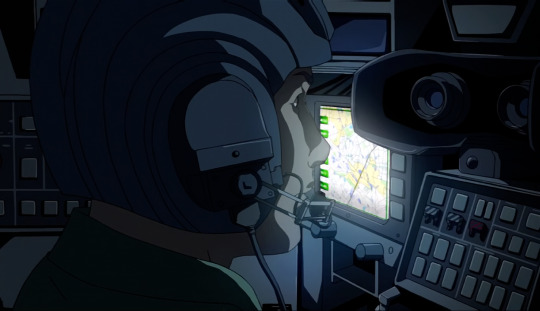




Oh no, it’s dumb. At least the action sequences are great.
I’ve watched the first handful of episodes of Second Raid and it’s both a big improvement but also even worse than first series. Plot-wise, I’m really hoping balding psycho guy isn’t the series-spanning villain because he sucks. FMP didn’t need another crazy psycho guy that’s unreasonably effective at shooting, mech piloting, and has henchman that he kills with casual glee but still follow him for some reason. He’s the worst aspects of Gauron, but even more painful to watch. Throw in some emotionless incest fanservice lesbian twins that fight like anime girls, in a series that’s otherwise fairly grounded in reality, and it’s evident Shoji Gatoh has a big problem when it comes to writing villains.
I’m dreading what the rest of the series’ plot is going to look like, but on the bright side, the animation is fantastic. The actions sequences are tight, with a lot of “close enough” real military tactics and communication practices. It’s easy to forget how dumb the plot is because the action sequences take up entire episodes and it’s nonstop tactical mechs operating tactically. It’s clear that Shoji Gatoh is big into real world military stuff, frequently inserting cool modern and near future tech like the Comanche. You got that feeling even with the Gonzo directed series, but KyoAni does a much better job of showing off that sort of thing.
For example, there’s a short series of shots where a couple Leclercs fire a killing shot on a mech. You’re then treated to a slow motion view of the sabot breaking up to reveal the kinetic penetrators. They didn’t have to do that, and the scene would have worked all the same if it was just a big animated tracer/bullet, but they went the extra mile.
They keep making me like Tessa more and more. In the first series she sometimes gives questionable tactical advice, but she absolutely knew her stuff when it came to the submarine itself. Though it’s not really her job to command operations (that’s Kalinin’s job), she has some really great scenes during the tunnel raid where she fairly quickly realizes that their digital maps and communication chain are compromised, and turns that on its head by listening to radio traffic and coordinating on a paper map. It’s great stuff. I love the tiny captain, and I love how professional and competent she is while “on the clock,” not falling prey to the so many typical anime tropes that her character suffers from when in private.
I’ve made it this far so I may as well see Second Raid through. I’m not sure if I’ll watch the third series, which only came out a couple years ago, since I’ve heard some really bad things about it. My expectations for the rest of Second Raid remain pretty low. There’s still a lot of unanswered questions I have from the first series but somehow I don’t think they’ll be answered.
5 notes
·
View notes